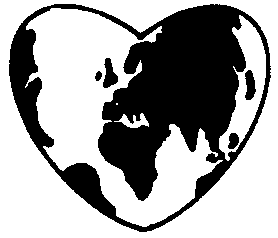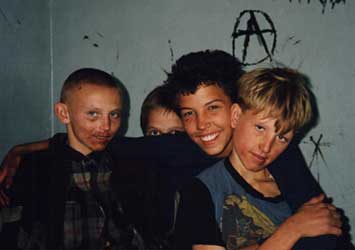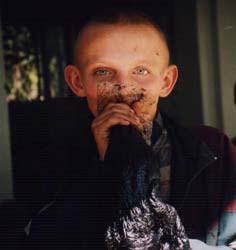Land and
Resources
Ukraine is mostly flat plains or gently rolling hills. Elevation generally rises from the
southern Black Sea region northward, although the northernmost region of Polesie is a vast
marshy lowland. The only mountain ranges are the Carpathians in the extreme west and the
Yayla Range in the southern Crimea. The major river, fed by many tributaries, is the
Dnieper, which bisects the country in a broad arc before emptying into the Black Sea.
Other important waterways include, in the west, the Dniester, and the Southern Bug rivers,
which drain into the Black Sea, and, in the east, the Donets, which flows into the Sea of
Azov.
Climate
Most of Ukraine has a moderately continental climate, though it is alpine in the
Carpathians and subtropical in parts of the Crimea.
Resources
Ukraine has large reserves of peat, natural gas, and coal but insufficient oil reserves to
meet its energy needs. Iron ore and other mineral resources are most abundant in the Donets Basin (Donbas) and the Dnepr Basin, which are the
nation's industrial heartlands.
People
The population of Ukraine was estimated in 1996 at 51,230,000, with a population density
of 85 persons per sq km. The most notable recent demographic trend has been a decline in
population with a loss of 714,000 between 1991 and 1996 due to death rates exceeding birth
rates. Leading factors in the country’s low fertility and high mortality rates are
environmental pollution, poor diet, widespread smoking and alcoholism, and deteriorating
medical care. About 68 percent of the population lives in cities and towns. The largest
cities in Ukraine are Kyiv, the country’s capital and economic, cultural, and
educational center; Kharkiv, noted for its engineering expertise, machinery plants, and
educational institutions; Dnipropetrovs’k, a center of metallurgical and aerospace
industries; and Donetsk, known for mining
and metallurgy. Odessa, on the Black Sea coast, is the country’s largest seaport.
Ethnic Groups and Languages
Ethnic Ukrainians comprise 73 percent of the population of Ukraine. Russians are the
largest minority group at 22 percent. Jews and Belarusians each account for about 1
percent of the total. Ethnic clashes are rare, although some tension exists in Crimea
between Crimean Tatars and ethnic Russians. The Crimean Tatars, who were forcibly deported
to Central Asia in 1944, are being allowed to resettle in Crimea. Of the 250,000 who have
returned, about 100,000 still have inadequate housing and 70,000 have not yet received
Ukrainian citizenship.
Education and Health Care
Literacy has been nearly universal since the mid-20th century. All education
through the university level is free and compulsory through the eighth grade. Medical care
is free of charge, but medical services have deteriorated since the 1970s.
History
In the 9th century the first historic state on Ukrainian territory rose around the city of
Kiev. From its core in Ukraine, the Kievan state expanded rapidly toward the northwest
into modern Belarus, and northeast into what is now Russia. The name Rus', by which the
Kievan state came to be known, was at first applied to the environs of Kiev and later to
the entire territory ruled by members of the Kievan dynasty. In 988, VLADIMIR I introduced
Orthodox Christianity as the official religion of the realm, and under his successors a
new Christian culture developed.
In the 14th century GALICIA fell under the rule of Poland, and most of the rest of Ukraine
came under the Grand Duchy of Lithuania. In 1569, when Lithuania formed a political union
with Poland, virtually all Ukrainian lands were transferred to the direct jurisdiction of
the Polish crown. The expansion of Polish magnate landownership, the Polonization of the
local nobility, and the inroads of Roman Catholicism at the expense of Orthodoxy
engendered social, religious, and national tensions in Ukraine. Religious strife increased
when a majority of the Orthodox bishops in the Polish-Lithuanian Commonwealth accepted
union with Rome in 1596. The strongest opponents of the church were the Cossacks, who had
developed into a powerful military force on Ukraine's steppe frontier and resisted Polish
attempts to bring them under control
The rising tensions exploded in a vast Cossack insurrection under the leadership of Bogdan
Khmelnytsky in 1648, which was joined by the peasantry in revolt against serfdom. Rebel
activity was directed not only against the Poles but also against the Jews, whom the
peasants identified with the Polish regime. Initial success encouraged Khmelnytsky to
begin the formation of a Ukrainian Cossack state independent of Poland. However, an
agreement with Moscow in 1654 made him a vassal of the Russian tsar, and in 1667, Ukraine
was partitioned between Muscovy and Poland. For a time Russian Ukraine enjoyed self-rule
under its hetman (prince). After Hetman Ivan Mazepa made a bid (1708-09) for independence
in alliance with Sweden, however, Ukrainian autonomy was severely curtailed; it was
finally abolished by Catherine II in the 1760s. In the late 18th century the Russian
Empire absorbed the remainder of Ukraine in the partitions of Poland, except for Galicia,
which was annexed by Austria. At the same time Russia's conquest of the Crimea opened the
southern steppes and Black Sea coast to Ukrainian settlement.
In the 19th century a modern national movement developed in Ukraine. Russia's response was
repression, denial of Ukrainian nationality, and a ban on the Ukrainian language (1863 and
1876). A freer atmosphere for Ukrainian self-expression existed in Austrian Galicia.
After the collapse of both the Russian Empire and Austria-Hungary at the end of World War
I, the two Ukrainian regions were briefly reunited in an independent state. In 1921,
however, Galicia and Volhynia were occupied by Poland, while smaller areas in the west
were annexed by Romania and Czechoslovakia, respectively. Eastern Ukraine, conquered by
the Soviets, became the Ukrainian SSR. In the east Stalin's forced collectivization and an
artificially induced famine in 1932-33 led to the loss of several million lives. World War
II brought massive destruction and further loss of life as Ukraine became the main
battlefield between the USSR and Nazi Germany. Postwar Soviet annexation of western
Ukraine was resisted by guerrilla forces until the early 1950s. The transfer of the Crimea
from Russia to Ukraine in 1954 completed the present configuration.
After the demise of the USSR, Ukraine joined the other former Soviet republics in forming
the Commonwealth of Independant States, but, having at last attained independence after
centuries of foreign domination, its primary concern was to avoid falling back into the
Russian orbit. Ukrainian relations with Russia were troubled by disputes over the Crimea
(which the Russians coveted), control of the former Soviet Black Sea fleet, and the
disposition of Soviet nuclear weapons on Ukrainian soil. By the terms of the Start I
nuclear disarmament treaty, all such weapons are to be dismantled. But Ukraine was
reluctant to comply with this, fearing that Russia might use its nuclear arsenal to
reassert its dominance. Another problem was the country's deteriorating economy.
Courtesy Grolier Encyclopedia Ó 1998 |
 |


![]()






